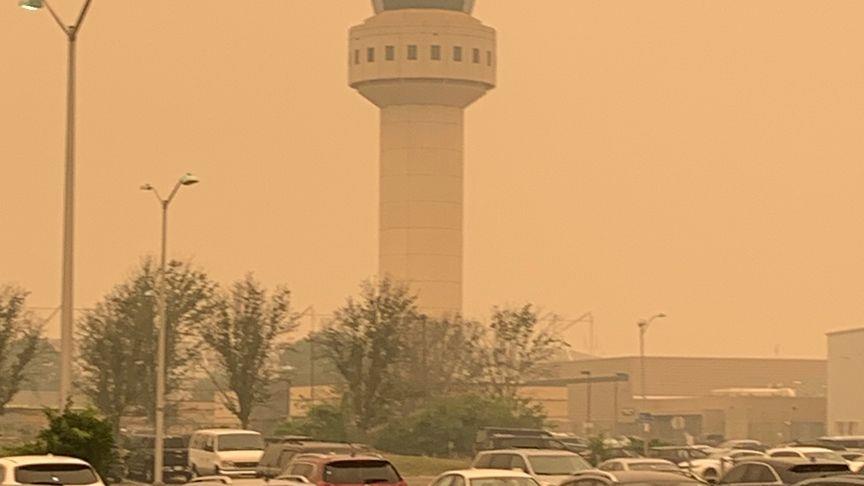Long Islanders were confronted with a strange sight recently as smoke from huge wildfires in Canada blotted out the sun and cast an eerie pall over the landscape. Health advisories were issued and outdoor activities canceled as the acrid smell of smoke filled the air.
As the smoky haze lingered, air quality alerts were issued throughout the Northeast and parts of the Midwest with New York and Chicago registering among the worst pollution of any cities on the globe. Those venturing outdoors caught a pungent whiff of smoke from over 150 fires burning in Nova Scotia and Quebec. Flights at major airports were canceled and outdoor school activities nixed as the day wore on and people were warned to stay inside. Soot collected on cars and people coming in from the outside could smell smoke in their hair and clothes.
“You could barely see the traffic signs ahead of you,” said Stony Brook real estate broker Parker Hough driving down Sunrise Highway near William Floyd Parkway. “The sun looked like a pale reddish blob; it was quite surreal.” Children and adults, especially those with pulmonary or respiratory disease such as asthma, were warned to stay inside.
 |
|
The control tower at Islip McArthur Airport stands out from
the haze that enveloped Long Island last week. File Photo
|
Exposure to air pollution can cause inflammation and weaken the immune system, particularly if the tiny particles penetrate the lungs and enter the bloodstream, health officials warn. Smoke and other particulates can increase the risk of asthma, lung cancer and other chronic lung diseases, particularly in the vulnerable, including the elderly, pregnant women, infants, and children.
As the weather pattern kept the region in the path of the drifting smoke from the Canada conflagrations, the U.S. sent manpower and equipment to help beat back the flames. More than 600 firefighters coordinated by the National Interagency Fire Center headed north, along with water-bombing aircraft and a team of forest rangers from various states. A shift in the winds have spared the lower 48 for now, but the fires still rage out of control and observers are keeping a sharp eye to see if conditions change.
